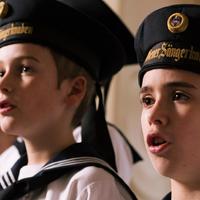
Wiener Sängerknaben
The choir is the modern-day descendant of the boys' choirs of the Viennese Court, dating back to the late Middle Ages. The choir was, for practical purposes, established by a letter written by Maximilian I on 7 July 1498. In the letter, the Emperor instructed court officials to employ a singing master, two basses and six boys. A Slovene, Jurij Slatkonja, became the director of the ensemble. The role of the choir (numbering between fourteen and twenty) was to provide musical accompaniment to the church mass. The boys received a solid musical education, which in most cases had a significant impact on the rest of their lives, as many went on to become professional musicians. Composers Jacobus Gallus, Franz Schubert, and conductors Hans Richter, Felix Mottl and Clemens Krauss were members of the choir. In 1920 the Hofkapelle (court musicians) was disbanded. However, the rector at the time, Josef Schnitt, sought a continuation of the tradition. In 1924 the "Vienna Boys' Choir" was officially founded and has extended into being a professional music group. Since 1948 the Palais Ausgarten has served as their rehearsal venue and boarding school which goes from kindergarten up to middle school. The boys are divided into four sub-groups or touring choirs, named after famous Austrian composers associated with the choir's history, namely Bruckner, Haydn, Mozart and Schubert. The four choirs are of equal standing; the tours, appearances in Vienna and recording projects are shared among them. Each choir has a choirmaster, and two tutors or prefects who travel with the boys. They perform about 300 concerts each year in front of almost 500,000 people. Each group tours for about nine to eleven weeks.
